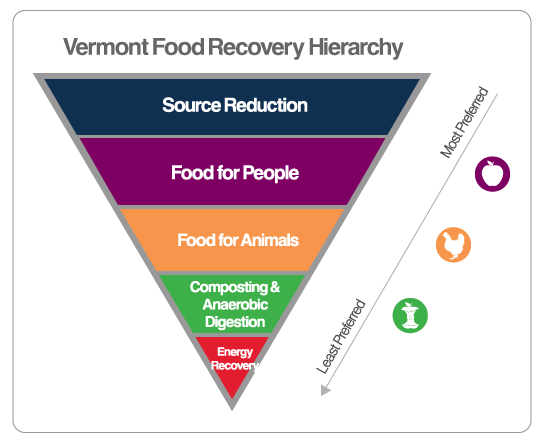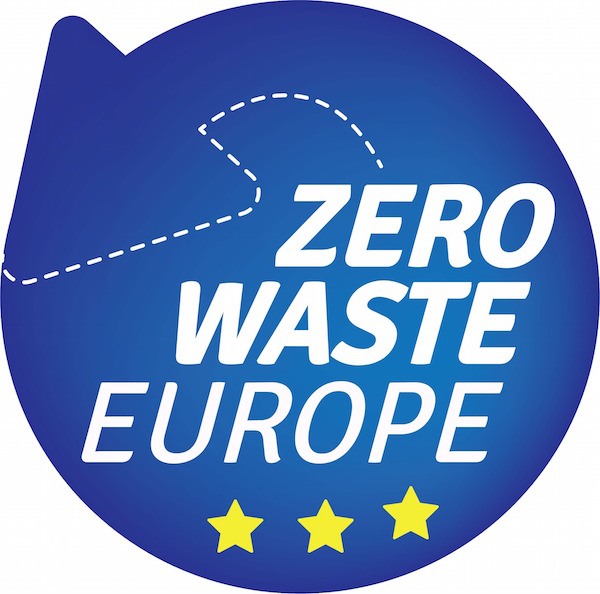Vermont’s Universal Recycling of Solid Waste law requires recyclable materials, leaf and yard debris, clean wood waste, and food scraps to be diverted from landfills. The summary information below of the Vermont program was contained in a January 2017 report from the Maryland Department of Legislative Services’ titled, Solid Waste and Recycling Management in Maryland (page 52-53). The State of Vermont’s latest Biennial Solid Waste Report to the Legislature (January 2017) also contains a summary of the law.
Summary of Vermont’s 2012 Universal Recycling Law (Act 148)
According to Vermont’s most recent Materials Management Plan (formally referred to as the Solid Waste Management Plan), in recent years, the state’s per capita solid waste generation rate was more than 5 pounds per day, and the state’s recycling and reuse rate had stagnated in the mid 30% range. In response to these figures, Vermont recently adopted a “sustainable materials strategy,” which focuses on using materials throughout the entire lifecycle of a product or material with the intent of preventing overall waste, increasing reusability, and increasing recycling and organics diversion. Vermont has identified several benefits to adopting a sustainable materials strategy, including promoting economic activity and greenhouse gas emissions reductions. A key component to achieving Vermont’s strategy is the Universal Recycling of Solid Waste law, which was adopted in 2012 to improve the capture and diversion rates of valuable resources within the state.
The Universal Recycling of Solid Waste law requires recyclable materials, leaf and yard debris, clean wood waste, and food scraps to be diverted from landfills. Additionally, the law seeks to provide increased recycling choices and convenience to residents and businesses. Finally, implementation of the law is phased-in to allow time to establish collection services and processing facilities for managing mandated recyclables, leaf and yard debris, and food scraps. A more detailed summary of the law is as follows.
- Solid Waste Disposal Ban: As of July 1, 2015, specified recyclables, including, among other things, aluminum and steel cans, glass bottles and jars, corrugated cardboard, and paper may not be disposed in a landfill. As of July 1, 2016, leaf and yard debris and clean wood waste may not be disposed in a landfill. All food scraps must be diverted from landfills by 2020 with diversions being phased-in over a period of six years, beginning July 1, 2014.
- Parallel Collection Requirements at Facilities: Facility owners that offer trash collection must also offer collection of recyclables by July 1, 2014, leaf and yard debris by July 1, 2015, and food scraps by July 1, 2017. Facilities are prohibited from charging a separate fee for the collection of residential recyclables, but may charge commercial haulers for collection of recyclables. However, the costs of collecting recyclables from residents may be included in trash collection fees. Additionally, facilities may charge a fee for the collection of leaf and yard debris and food scraps.
- Parallel Collection Requirements at Curbside: Haulers that offer services for managing trash must also offer services for managing recyclables by July 1, 2015, leaf and yard debris by July 1, 2016, and food scraps by July 1, 2017. Haulers are prohibited from charging a separate fee for the collection of residential recyclables but may include the charge in trash collection fees. Additionally, haulers may charge a fee for the collection of leaf and yard debris and food scraps.
- Food Recovery Hierarchy: The law establishes the following food recovery hierarchy: (1) reduction at the source; (2) rescuing quality food for people; (3) diversion for agricultural uses, including as food for animals; (4) composting, nutrient management, and anaerobic digestion; and (5) energy recovery.
- Pay-as-you-throw: Under the law, municipalities are required to implement variable rate pricing (also known as pay-as-you-throw) to provide incentives to residential customers to reduce waste.
- Additional Recycling Options: The law provides more recycling options by requiring recycling containers to be located in public buildings and publicly owned or controlled land wherever trash cans are located, subject to exceptions.
MORE RESOURCES





